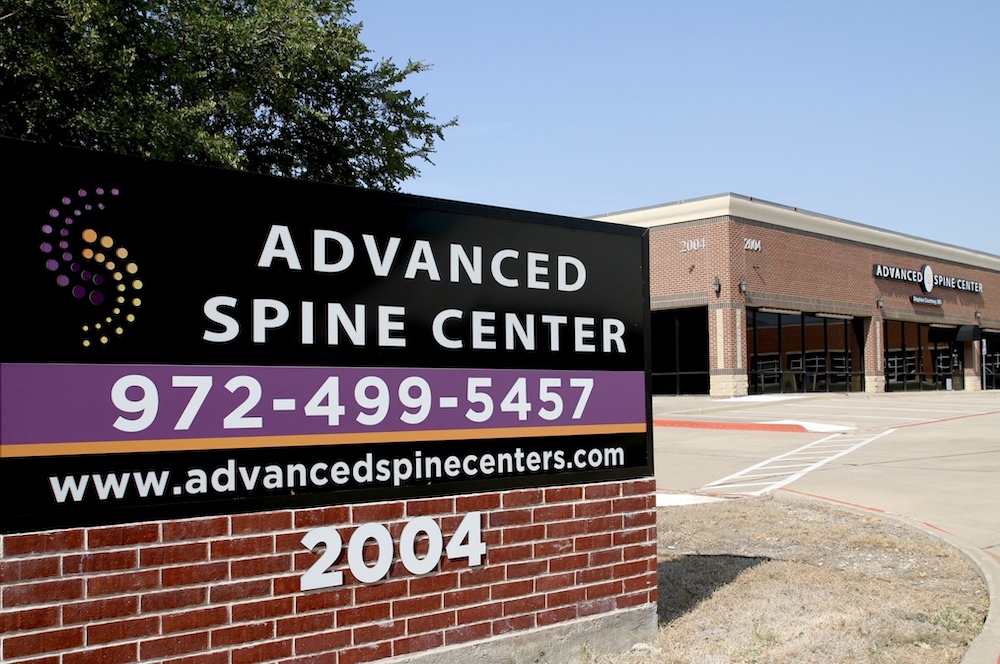Specialties
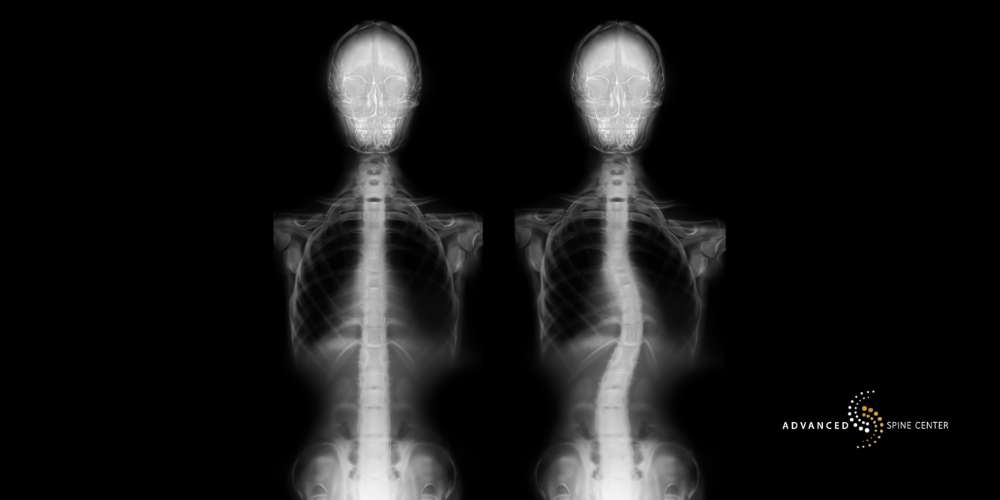
Scoliosis is a complex condition that causes an abnormal curvature of the spine and often leads to back pain, uneven shoulders, and even trouble breathing in more severe cases. At Advanced Spine Center, we are proud to offer comprehensive scoliosis treatment in Plano, TX, providing both non-surgical and surgical options for scoliosis patients of all ages.
Whether you’re seeking help for adolescent idiopathic scoliosis, adult scoliosis, degenerative scoliosis, or other types of scoliosis, such as congenital scoliosis or neuromuscular scoliosis, our experienced team is here to help. From conservative approaches like physical therapy and the Schroth Method to advanced scoliosis surgery, including spinal fusion, we tailor every treatment plan to meet your individual needs.
If you or a loved one has been diagnosed with scoliosis or is experiencing symptoms like leg pain, back pain, or signs of a spinal curve, call (972) 499-5457 or contact ASC online to schedule a consultation and learn about your treatment options.
What is Scoliosis?
Scoliosis is a medical condition that causes an abnormal curvature of the spine, resulting in a sideways curve that can affect the lumbar spine, thoracic spine, or both. Instead of appearing straight when viewed from behind, the spine curves, sometimes resembling an “S” or “C” shape.
Scoliosis affects people of all ages, but it is most commonly diagnosed during adolescence as adolescent idiopathic scoliosis. In adults, scoliosis can develop later in life as adult scoliosis or degenerative scoliosis, often due to wear and tear on the spine.
Depending on the severity, scoliosis can cause back pain, uneven shoulders, a tilted rib cage, trouble breathing, and even leg pain. Some cases involve mild curves that require only observation, while moderate scoliosis or severe scoliosis may need more active scoliosis treatment, including physical therapy or scoliosis surgery.
Scoliosis, Kyphosis, and Lordosis
Scoliosis, kyphosis, and lordosis are three different spinal conditions that involve abnormal curvature, each affecting the spine in a unique way. Scoliosis refers to a sideways curvature, often seen in an “S” or “C” shape, usually affecting the thoracic or lumbar spine. Kyphosis involves an excessive forward rounding of the upper back, while lordosis is marked by an exaggerated inward curve of the lower back.
These conditions can cause back pain, poor posture, limited mobility, and, in some cases, breathing or nerve-related complications. Mild to moderate cases are often treated with physical therapy, bracing, or other conservative treatments. However, surgical treatment may be necessary when curves become severe, cause significant pain, or lead to structural or neurological issues.
Types of Scoliosis
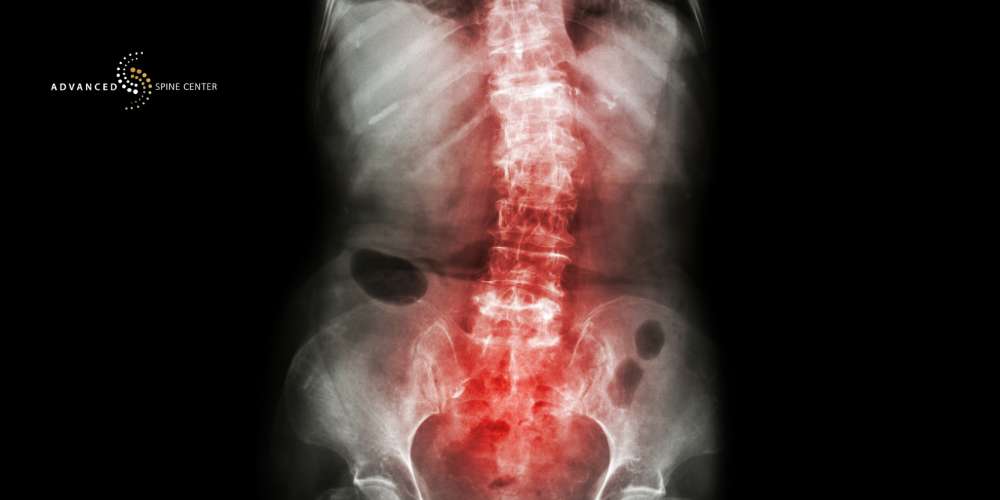
Scoliosis can develop for several different reasons, and understanding the underlying cause is an important part of determining the right scoliosis treatment plan. Some people are diagnosed with idiopathic scoliosis, meaning the cause is unknown, while others may develop scoliosis due to an underlying condition affecting the nervous system or spine structure. In some cases, scoliosis affects children at an early age, while others may not experience symptoms until adulthood.
Whether scoliosis is diagnosed as mild scoliosis, moderate scoliosis, or severe scoliosis, identifying the specific type helps healthcare professionals recommend the most effective treatment options, from conservative care to scoliosis surgery.
Idiopathic Scoliosis
Idiopathic scoliosis is the most common type of scoliosis diagnosed in children, adolescents, and even some adults. The term “idiopathic” means that the exact cause of the spinal curve is unknown.
Adolescent idiopathic scoliosis typically develops during periods of rapid growth, often between the ages of 10 and 18, and is usually detected during a physical exam or school nurse screening. People with idiopathic scoliosis may experience mild scoliosis with no symptoms, or more noticeable issues, such as uneven shoulders, a prominent rib cage, or back pain, as the spine curves further.
In many cases, mild curves require only monitoring, while moderate and severe scoliosis may call for active treatment, including physical therapy, bracing, or surgery if the curve progression threatens to worsen.
Congenital Scoliosis
Congenital scoliosis is a type of scoliosis caused by abnormalities in the spine that develop before birth. As the spine forms during early pregnancy, one or more vertebrae may fail to form properly or may fuse together, leading to an abnormal curvature of the spine. This type of scoliosis affects the thoracic spine, lumbar spine, or both, and is often diagnosed in infancy or early childhood during a physical exam.
Children with congenital scoliosis may have mild curves that stay stable or severe curves that worsen as they grow, sometimes causing pain, trouble breathing, or uneven shoulders.
Neuromuscular Scoliosis
Neuromuscular scoliosis develops as a result of underlying conditions that affect the nervous system and muscles, such as cerebral palsy, muscular dystrophy, or spinal cord injuries. When the muscles around the spine are too weak or uncoordinated to support proper alignment, an abnormal curvature can form, leading to progressive spinal curves over time.
This type of scoliosis often affects both the thoracic spine and the lumbar spine, causing more severe curves than idiopathic scoliosis. People with neuromuscular scoliosis may experience back pain, trouble breathing, uneven shoulders, and difficulty maintaining an upright posture.
Degenerative Scoliosis (Scoliosis in Adults)
Degenerative scoliosis, also known as scoliosis in adults, typically develops later in life as a result of wear and tear on the spine. As the discs and joints in the lumbar spine and thoracic spine begin to break down with age, the spine can lose stability, leading to an abnormal curvature.
This type of scoliosis often causes back pain, leg pain, trouble breathing, and uneven shoulders. Unlike adolescent idiopathic scoliosis, degenerative scoliosis progresses due to changes in spinal structure rather than rapid growth. Risk factors include advancing age, underlying conditions, and a history of untreated mild scoliosis.
Risk Factors for Developing Scoliosis
Several factors can increase the likelihood that a person will develop scoliosis. One of the most common risk factors is genetics, as scoliosis tends to run in families, and people assigned female at birth are statistically at higher risk. In many cases, scoliosis affects individuals during periods of rapid growth, particularly with adolescent idiopathic scoliosis.
Other risk factors include underlying conditions that affect the nervous system, such as muscular dystrophy or cerebral palsy, which are often associated with neuromuscular scoliosis. Age-related degeneration of the spine can also lead to degenerative scoliosis in adults. Additionally, congenital scoliosis can occur when vertebrae form abnormally before birth.
While mild scoliosis may go unnoticed for some time, it is important to recognize that curve progression can happen without early scoliosis treatment. Regular physical exams and early diagnosis by a healthcare professional are key to managing scoliosis effectively and preventing severe curves that could cause pain, trouble breathing, or the need for surgical treatment.
How is Scoliosis Diagnosed
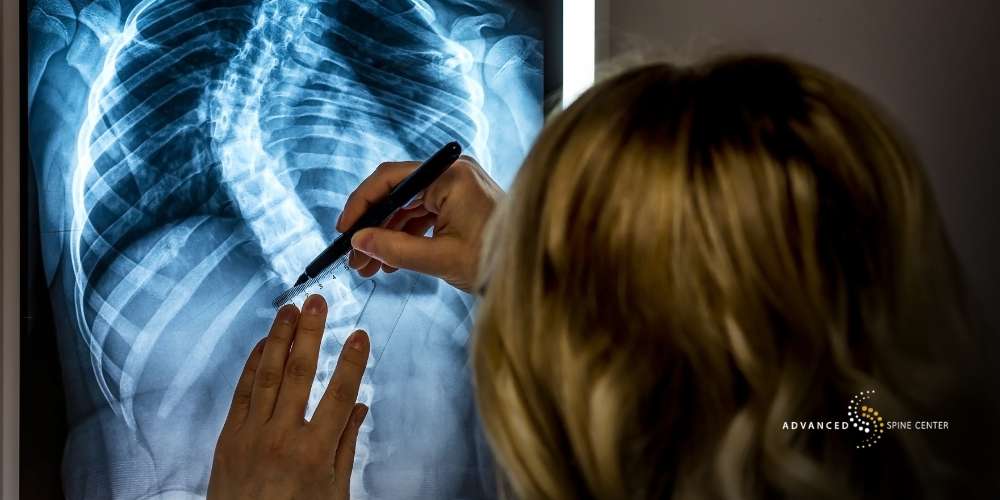
Scoliosis is generally diagnosed through a combination of physical exams and imaging studies. During an initial evaluation, a healthcare professional may perform a simple bend forward test to check for uneven shoulders, asymmetry in the rib cage, or other visible signs of a spinal curve. School nurses often perform routine scoliosis screenings to catch early signs in children and adolescents.
If scoliosis is suspected, imaging tests such as X-rays are used to confirm the diagnosis, measure the degree of curvature, and determine whether it affects the lumbar spine, thoracic spine, or both. Curves measuring greater than 10 degrees are generally considered scoliosis. Additional imaging, such as MRI or CT scans, may be recommended if there are concerns about the nervous system or underlying conditions.
Understanding the severity of the curve, whether it is mild scoliosis, moderate scoliosis, or severe scoliosis, helps guide treatment options and monitor for potential curve progression as skeletal maturity is reached.
Diagnosing Adolescent Idiopathic Scoliosis
Diagnosing adolescent idiopathic scoliosis begins during routine physical exams or school screenings, when a healthcare professional or school nurse notices uneven shoulders, a prominent rib cage, or asymmetry during a forward bend test.
Adolescent idiopathic scoliosis typically develops during periods of rapid growth, and early detection is important to prevent scoliosis from progressing into moderate scoliosis or severe scoliosis. When scoliosis is suspected, X-rays are used to measure spine curves and confirm the diagnosis, determining whether the abnormal curvature affects the thoracic spine, lumbar spine, or both.
Most children with mild scoliosis are monitored closely as they grow, while moderate to severe curves may require scoliosis treatment such as physical therapy, bracing, or scoliosis surgery with an experienced pediatric orthopedic surgeon.
Diagnosing Adult Scoliosis
Diagnosing adult scoliosis often occurs when a person seeks medical attention for symptoms such as back pain, leg pain, trouble breathing, or noticeable changes in posture, such as uneven shoulders or a shifted rib cage. Unlike adolescent idiopathic scoliosis, scoliosis in adults usually develops as degenerative scoliosis due to age-related changes in the spine.
A healthcare professional will begin with a physical exam to assess spinal alignment and may order imaging studies, such as X-rays, to evaluate the severity of the spinal curve and check for signs of nerve damage or underlying conditions. Imaging helps determine whether scoliosis affects the lumbar spine, thoracic spine, or both, and whether the curves are mild, moderate, or severe.
Diagnosing scoliosis accurately is essential for developing an effective treatment plan, whether through conservative methods like physical therapy or surgical treatments such as spinal fusion for severe cases.
Non-Surgical Treatment Options for Scoliosis in Plano, TX
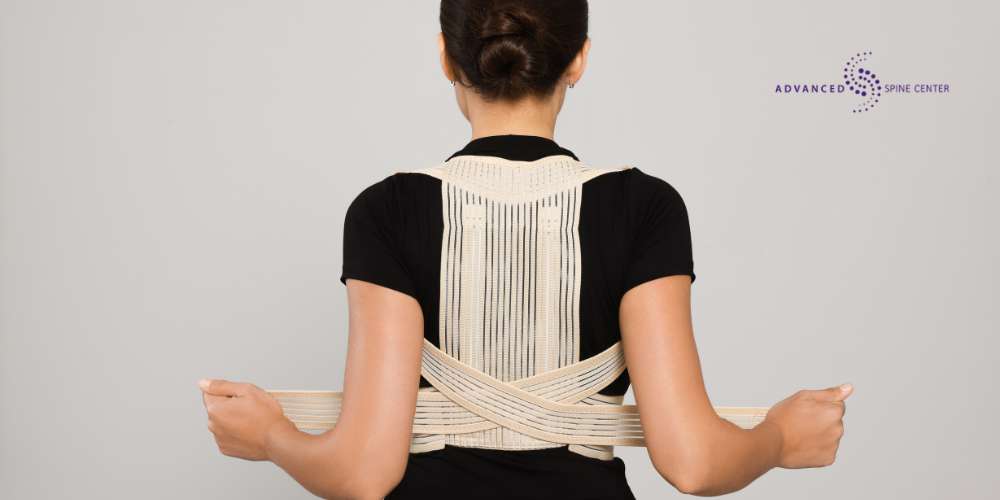
For many scoliosis patients, especially those with mild scoliosis or moderate scoliosis, non-surgical treatment options can help manage symptoms and slow curve progression without the need for spinal surgery.
At Advanced Spine Center, we offer a range of conservative treatments in Plano, TX, including specialized physical therapy, scoliosis-specific exercise programs like the Schroth Method, and bracing for growing adolescents. These approaches are designed to strengthen the abdominal muscles, relieve pressure on the spine, and support better posture and mobility.
Non-surgical scoliosis treatment focuses on reducing pain, improving function, and preventing severe curves whenever possible, allowing many people with scoliosis to continue living active lives and even participate in sports.
Physical Therapy for Scoliosis
Physical therapy is a key part of conservative scoliosis treatment, especially for patients with mild to moderate scoliosis. A trained physical therapist designs targeted exercises to strengthen the abdominal muscles, improve spinal alignment, and relieve pressure on areas affected by the spinal curve. It can help reduce back pain, improve posture, and slow the progression of a curve, particularly in people with adolescent idiopathic scoliosis or scoliosis in adults.
The Schroth Method
The Schroth Method is a specialized form of physical therapy designed specifically for scoliosis patients. This technique uses customized exercises that focus on de-rotating, elongating, and stabilizing the spine by strengthening weakened muscles and improving posture.
By addressing the three-dimensional nature of spinal curves, the Schroth Method helps relieve pressure on the rib cage, correct imbalances in the abdominal muscles, and support better overall spinal alignment. It is an effective non-surgical treatment option for people with mild scoliosis, moderate scoliosis, or those trying to prevent curve progression without requiring spinal surgery.
Bracing for Adolescent Idiopathic Scoliosis
Bracing is a common non-surgical treatment option for adolescent idiopathic scoliosis, especially when curves are moderate and the patient is still growing. A properly fitted brace can help prevent curve progression by supporting the spine during critical periods of skeletal maturity.
While bracing does not cure scoliosis or reverse an existing spinal curve, it can significantly reduce the need for scoliosis surgery in many cases. Bracing is most effective when worn as prescribed by a healthcare professional, giving growing scoliosis patients the best chance to maintain spinal alignment without invasive treatment.
Scoliosis Surgery in Plano, TX
At Advanced Spine Center, we offer expert scoliosis surgery, including procedures such as lumbar spinal fusion in Plano, TX, to help patients with severe scoliosis, significant curves, or worsening symptoms like back pain, leg pain, and trouble breathing.
Surgery is often considered for adolescent idiopathic scoliosis that continues to progress despite bracing, as well as adult scoliosis and degenerative scoliosis causing significant pain or functional limitations. Our surgical treatments aim to straighten the spine, relieve pressure on nerves, and prevent further spinal deformity, using advanced techniques and careful planning to reduce risks like nerve damage.
For scoliosis patients whose condition cannot be treated nonsurgically, surgical treatment can dramatically improve alignment, mobility, and quality of life.
Life After Scoliosis Treatment
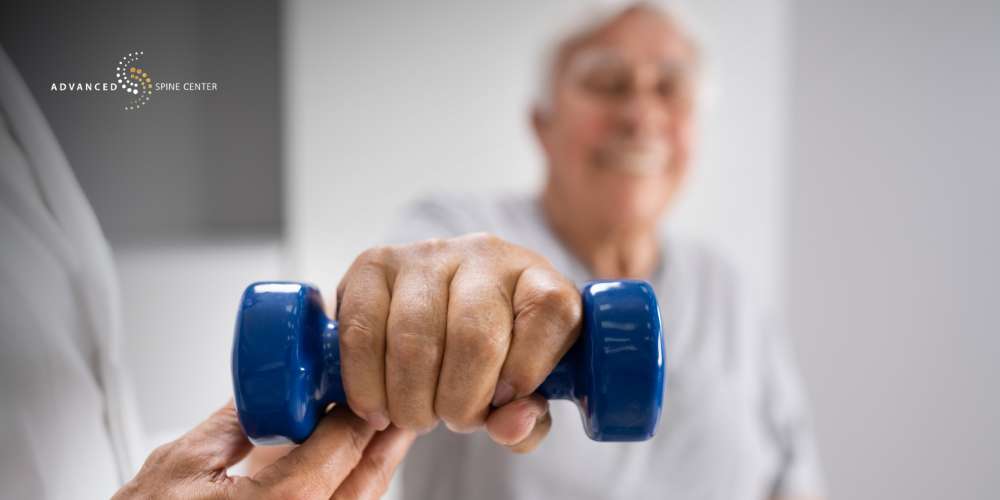
Recovering from scoliosis treatment varies for each patient, depending on the severity of the spinal curve, the type of treatment received, and whether the scoliosis was diagnosed during adolescence or adulthood. Some scoliosis patients continue physical therapy to strengthen their abdominal muscles and maintain spinal flexibility, while others may focus on adapting to changes after spinal fusion or other surgical treatments.
Managing back pain, improving posture, and preventing curve progression are common goals during recovery. With the right care plan and support from healthcare professionals, many people with scoliosis can return to daily activities, play sports, and lead active, healthy lives.
Recovery After Physical Therapy or Bracing
Recovery after physical therapy or bracing for scoliosis focuses on maintaining spinal strength, flexibility, and proper alignment as the body grows or adjusts. Many scoliosis patients with mild to moderate scoliosis can manage their condition successfully without the need for spinal surgery.
Continuing exercises that strengthen the abdominal muscles and support the spine can help relieve pressure, prevent curve progression, and reduce back pain over time. Regular check-ups with a healthcare professional are important for monitoring spine curves and ensuring that scoliosis remains stable after treatment.
Scoliosis Surgery Recovery Time
Recovery after scoliosis surgery, such as spinal fusion surgery, typically takes several months and varies based on the severity of the spinal curve, the type of procedure performed, and the patient’s overall health. Most scoliosis patients stay in the hospital for a few days after surgery and begin walking within the first week.
Physical therapy may be recommended to rebuild strength in the abdominal muscles and improve flexibility. While many people can return to school, work, or light activities within 6 to 12 weeks, full recovery and return to sports or heavy lifting often take 6 to 12 months.
Scoliosis FAQs
What Causes Scoliosis?
Several factors can cause scoliosis, but most cases are classified as idiopathic scoliosis, meaning the exact cause is unknown. Other causes include congenital spine abnormalities, underlying nervous system conditions such as muscular dystrophy or cerebral palsy (also known as neuromuscular scoliosis), and degenerative changes in the spine that can lead to adult scoliosis later in life.
Does Scoliosis Get Worse with Age?
Scoliosis can get worse with age, especially if the spinal curve progresses during periods of growth or if degenerative changes occur later in life. While mild scoliosis may remain stable for many years, moderate and severe scoliosis can worsen over time, particularly in adults with degenerative scoliosis that affects the lumbar or thoracic spine.
Is Scoliosis Genetic?
Scoliosis can have a genetic component, as it often runs in families, and people assigned female at birth are at higher risk of developing scoliosis. Although the exact cause of idiopathic scoliosis is unknown, research suggests that several genetic factors may influence the development and progression of a spinal curve.
Does Scoliosis Make You Shorter?
Yes, scoliosis can make a person appear shorter, especially when the spinal curve becomes more severe. As the spine curves abnormally, it can reduce overall height by compressing the space between the vertebrae and altering the alignment of the rib cage and shoulders.
Is Scoliosis a Disability?
Scoliosis can be considered a disability if the spinal curve is severe enough to cause significant physical limitations, chronic pain, or difficulty performing daily activities. While many people with mild scoliosis or moderate scoliosis live normal, active lives, severe scoliosis can impact mobility, breathing, and overall function, and may qualify for disability benefits in some cases.
Does Scoliosis Cause Back Pain?
Yes, scoliosis can cause back pain, especially as the spinal curve places uneven pressure on the muscles, joints, and nerves. While mild scoliosis may not cause significant discomfort, moderate to severe scoliosis often leads to chronic back pain, muscle fatigue, and even leg pain in some patients.
Why Choose Advanced Spine Center for Scoliosis Treatment in Plano, TX
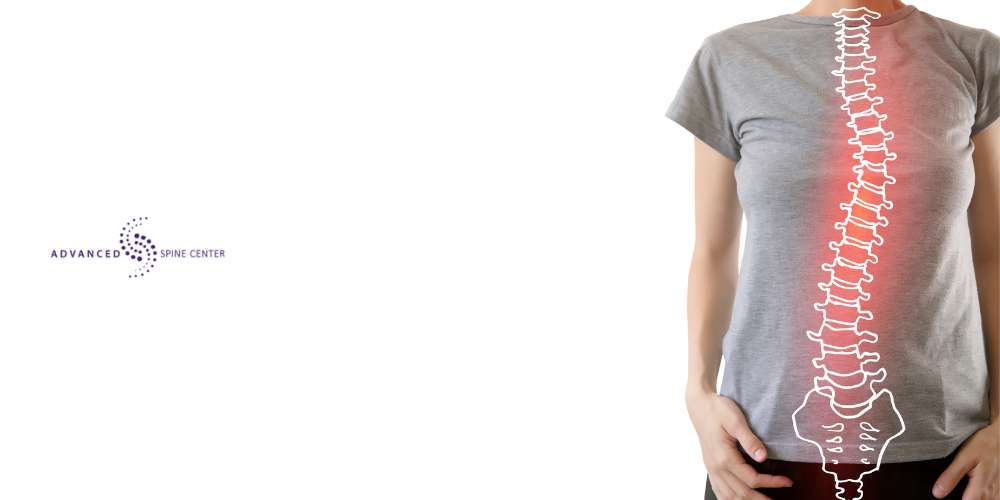
At Advanced Spine Center, we are committed to helping scoliosis patients find lasting relief and customized care at every stage of treatment. Whether you are managing mild scoliosis or facing more severe curves that require surgery, our team is ready to guide you through your options with experience and compassion.
If you have been diagnosed with scoliosis or are experiencing signs of a spinal curve, do not wait to seek expert care. Contact Advanced Spine Center in Plano, TX, today at (972) 499-5457 to schedule your consultation and start your path toward a stronger, healthier spine.
